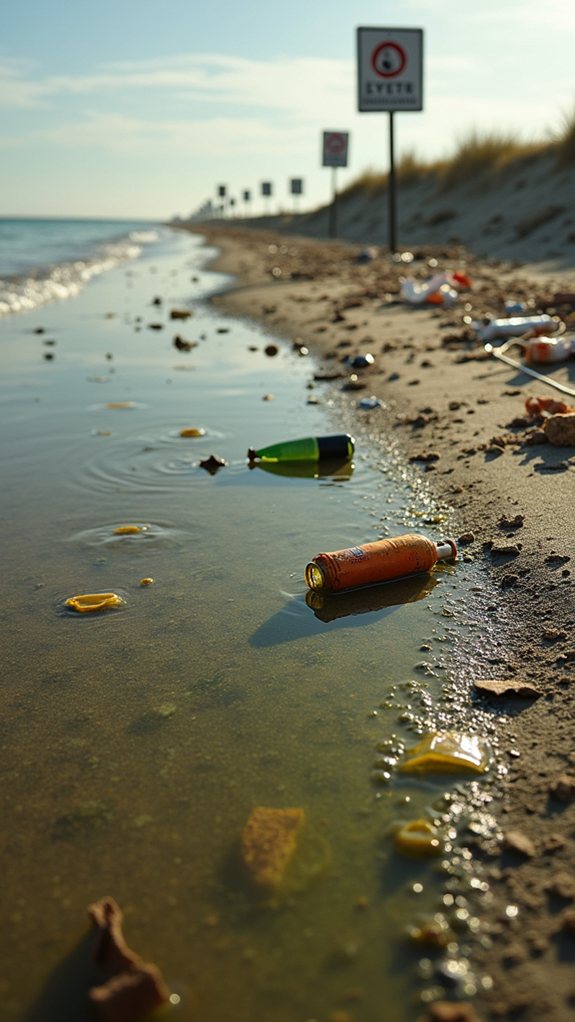What should be a sun-soaked paradise has turned murky for beachgoers across America’s coastlines. Over half of U.S. beaches now swim in fecal contamination, with Florida and Texas shorelines ranking among the most polluted. Swimmers who dip into these waters risk more than just a bad day at the beach—diarrhea, skin rashes, and other illnesses await the unsuspecting visitor. The crisis doesn’t just threaten public health; it’s washing away tourism dollars from coastal communities.
America’s Contaminated Coastlines: A Hidden Health Crisis

While Americans flock to coastal destinations for sun-soaked relaxation, they’re often wading into waters that harbor invisible dangers. Over half of U.S. beaches show alarming levels of fecal contamination, with more than 400 million beach visits annually putting swimmers at risk of illnesses ranging from diarrhea to persistent skin rashes. The culprits behind this aquatic contamination cocktail? Aging sewage systems that regularly overflow, agricultural runoff laden with fertilizers and manure, and stormwater that washes road pollutants straight into our swimming spots.
Beach visits often mean unwitting exposure to fecal contamination and illness-causing pathogens lurking in America’s seemingly pristine waters.
The geography of dirty beaches isn’t uniform across America’s coastlines. Southern states like Florida, Texas, and Louisiana are particularly problematic, with a whopping 84% of their beaches testing positive for fecal contamination. The West Coast doesn’t fare much better, with California, Oregon, and Washington seeing 70% of their beaches polluted at least once yearly. Even the beloved Great Lakes region can’t escape the trend, with 63% of its beaches experiencing contamination annually.
Oregon’s beaches, surprisingly, rank among the nation’s dirtiest due to agricultural practices that send runoff straight to the shore. Congressional funding of $11.7 billion allocated in 2021 falls drastically short of the EPA’s estimated needs of $271 billion to adequately address sewage and stormwater issues. Southern California’s famous stretches of sand tell a similar story – Santa Monica Beach regularly posts warning signs due to high bacteria levels, while Dockweiler State Beach has faced multiple closures following sewage spills that left conditions downright unsanitary.
Scientists estimate these contaminated waters cause approximately 57 million instances of illness each year, with swimmers exposed to dangerous pathogens like E. coli and enterococci. Beyond the immediate health impacts, the economic consequences ripple through coastal communities as tourists avoid beaches with “pollution reputations.” These negative perceptions significantly impact local economies as sullied beaches attract fewer visitors, diminishing revenue for coastal businesses. In contrast, Fernandina Beach in Florida stands out as a pristine coastal alternative with its uncrowded, clean shores that offer visitors a safer swimming experience. Several New Jersey beaches consistently fail water quality tests due to urban runoff issues that contribute significantly to coastal pollution.
Local communities aren’t sitting idly by, though. Beach cleanup initiatives are gaining momentum, and residents are demanding better infrastructure and stricter regulations on agricultural and industrial practices. The message is clear: Americans want their freedom to enjoy clean beaches without worrying that their playground might actually be a petri dish of pathogens.






